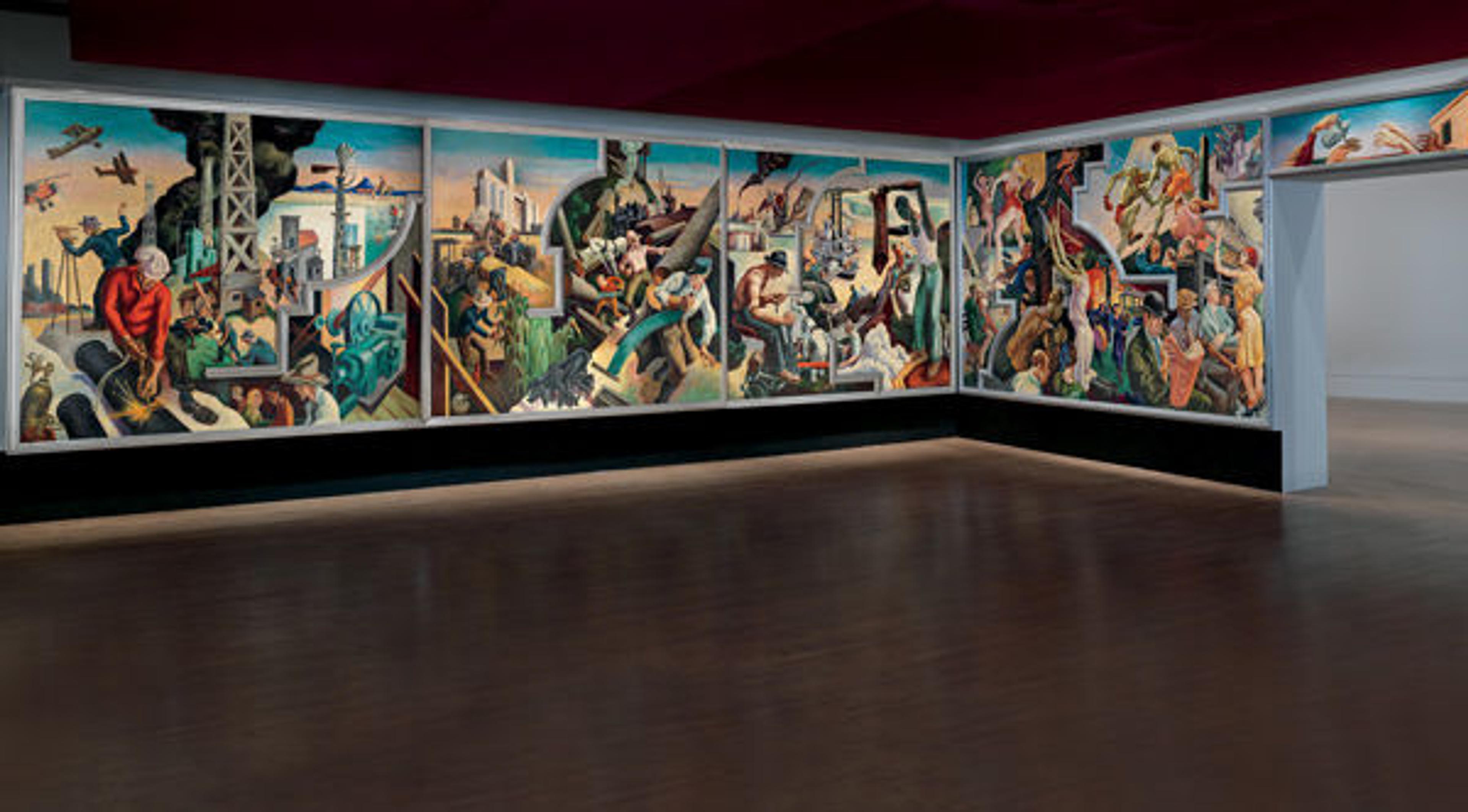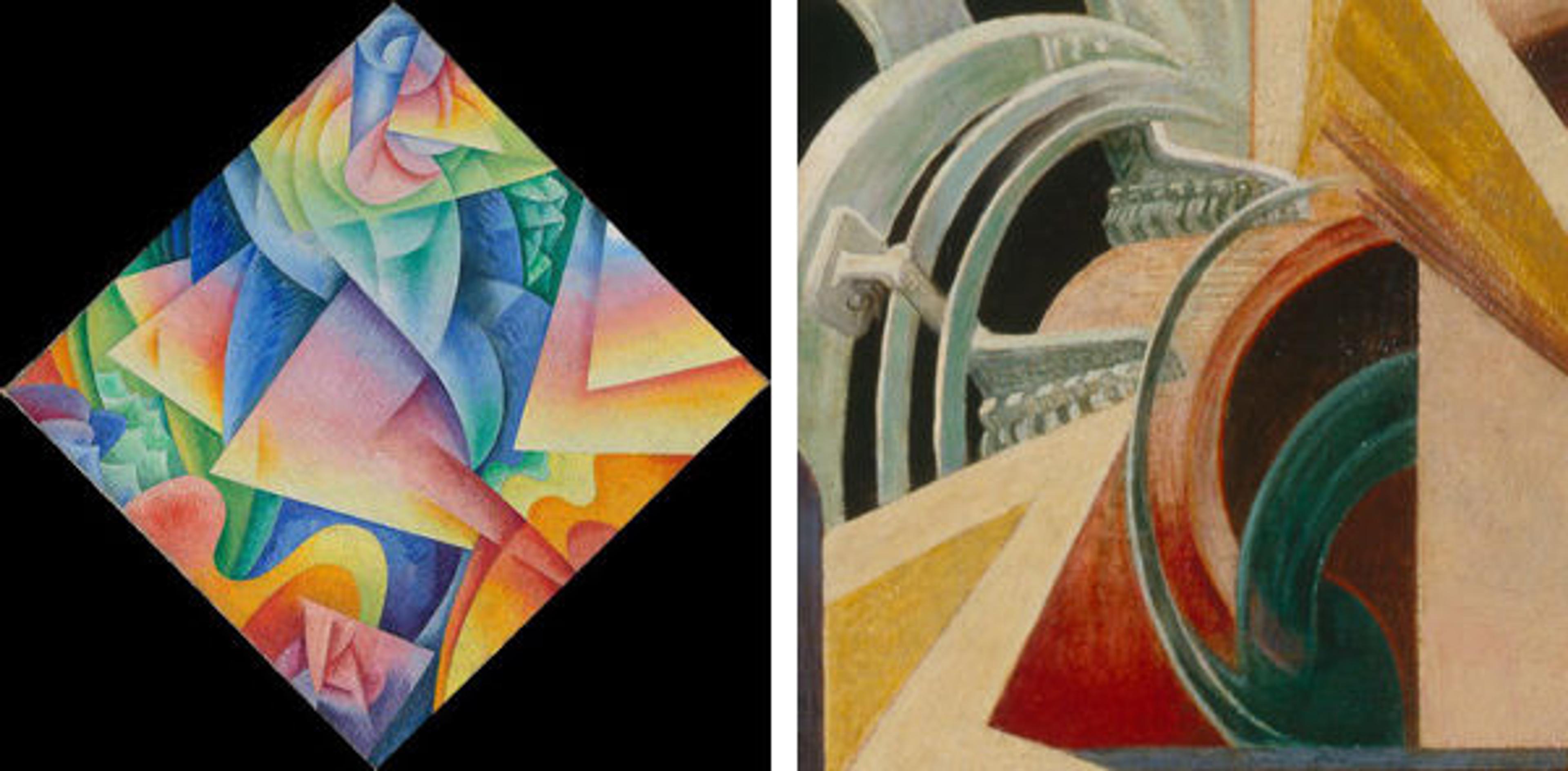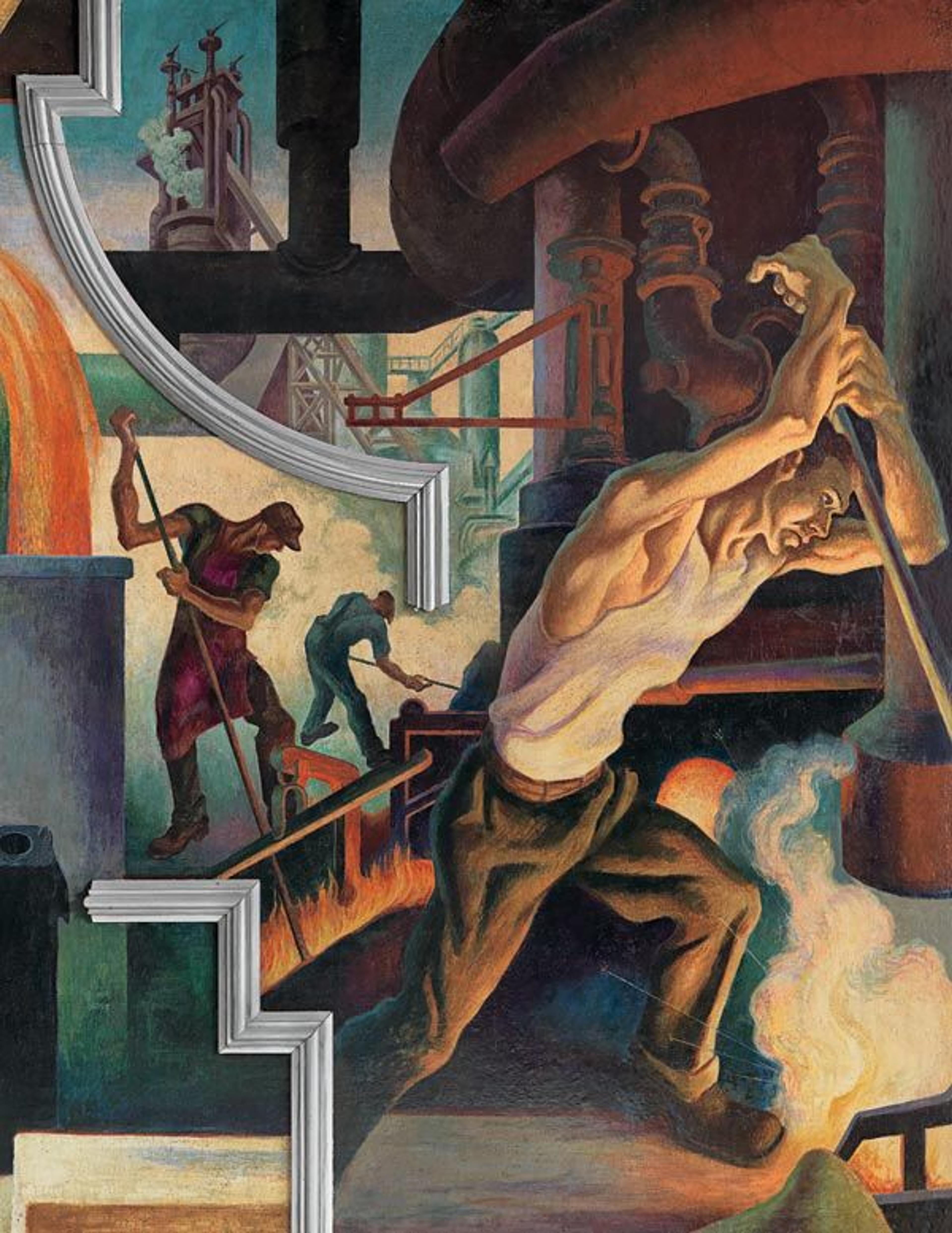Art and Life in Thomas Hart Benton's America Today, with Randall Griffey

«Missouri native Thomas Hart Benton is often recognized as the leader of Regionalism, the 1930s artistic movement that celebrated rural life in the United States, but few know that New York was his home from 1912 to 1935. In 1930, he received his first major commission for a mural from the New School of Social Research. Called America Today, that mural is the subject of The Metropolitan Museum of Art's latest Bulletin, published to accompany the acquisition of the mural as a gift from AXA in November 2012 and its installation at the Met.»
I spoke with Randall Griffey, curator of the exhibition Thomas Hart Benton's America Today Mural Rediscovered and co-author of the accompanying Bulletin, about Benton's mural and the connections between Benton's art and life.
Left: Met Members enjoy an annual subscription to the print Bulletin as part of their Membership—and, beginning July 17, Members will have special access to the interactive digital version of the Bulletin, featuring Thomas Hart Benton's America Today. Join today to have the full-color Bulletin delivered to your door, or purchase individual issues in The Met Store. To browse past issues, visit MetPublications.

Thomas Hart Benton (American, 1889–1975). America Today, 1930–31. Ten panels: Egg tempera with oil glazing over Permalba on a gesso ground on linen mounted to wood panels with a honeycomb interior; a: 92 x 160 in. (233.7 x 406.4 cm) b: 92 x 134 1/2 in. (233.7 x 341.6 cm) c: 92 x 134 1/2 in. (233.7 x 341.6 cm) d: 92 x 117 in. (233.7 x 297.2 cm) e: 92 x 117 in. (233.7 x 297.2 cm) f: 92 x 117 in. (233.7 x 297.2 cm) g: 92 x 117 in. (233.7 x 297.2 cm) h: 92 x 117 in. (233.7 x 297.2 cm) i: 92 x 117 in. (233.7 x 297.2 cm) j: 17 1/8 x 97 in. (43.5 x 246.4 cm). The Metropolitan Museum of Art, New York, Gift of AXA Equitable, 2012 (2012.478a–j)
Rachel High: People don't often associate Benton with New York; he is more strongly associated with the Midwest, but, as is discussed in the Bulletin, he spent around eighteen years in the city. In this mural cycle, we can see both parts of Benton's identity. Can you talk about Benton's dual interest in American regional culture and the city and how they interact in this work?
Randall Griffey: Benton was worldlier than people think. He spent years in France and New York before settling in Kansas City, Missouri. His public persona would easily lead one to think he was more provincial than he actually was. I think that is one of the reasons that the mural is a revelation; you see his personal ties to the Midwest in some of the panels, but others, like the City Activities panels, are immersed in the life and activity of New York. His studies abroad and awareness of European art echoes throughout the mural—especially in the Instruments of Power panel that greets you at the main entrance. So the mural is revelatory; it expands your perception of Benton.

Thomas Hart Benton (American, 1889–1975). Instruments of Power from America Today, 1930–31. Ten panels: Egg tempera with oil glazing over Permalba on a gesso ground on linen mounted to wood panels with a honeycomb interior; a: 92 x 160 in. The Metropolitan Museum of Art, New York, Gift of AXA Equitable, 2012 (2012.478a)
Rachel High: As you just mentioned, Benton had a strong familiarity with concurrent art movements in Europe. Could you talk a little bit about this, especially the Instruments of Power panel and its connections to Italian Futurism and other European art movements?
Randall Griffey: One of my favorite aspects of the new installation in gallery 909 in the Lila Acheson Wallace Wing is that you can stand in front of Gino Severini's Dancer = Propeller = Sea in one gallery and look into the mural room to see the Instruments of Power panel, which echoes Futurism in some ways. However, Benton wasn't necessarily inspired by Italian Futurism. My intent would never be to suggest that Benton was deriving directly from Italian Futurism, though I suspect he knew it. The similarities between these two paintings highlight the international appeal of the Machine Age across cultures and many different artists.

Left: Gino Severini (Italian, 1883–1966). Dancer = Propeller = Sea, 1915. Oil on canvas; 29 5/8 x 30 3/4 in. (75.2 x 78.1 cm). The Metropolitan Museum of Art, New York, Alfred Stieglitz Collection, 1949 (49.70.3). © 2015 Artists Rights Society (ARS), New York. Right: Close-up view of Instruments of Power from America Today
The clearest contemporaneous European artist influencing Benton's Instruments of Power panel is Giorgio de Chirico, and just two galleries away from the mural’s current installation is de Chirico's Ariadne. Benton's hydroelectric dam, which he renders as a very austere arcade that diminishes very rapidly in the distance, is a clear indication that he knew and liked de Chirico's work, which he would have seen in New York in the 1920s. The echoes between the works are wonderful.

Left: Giorgio de Chirico (Italian, 1888–1978). Ariadne, 1913. Oil and graphite on canvas; 53 3/8 x 71 in. (135.6 x 180.3 cm). The Metropolitan Museum of Art, New York, Bequest of Florene M. Schoenborn, 1995 (1996.403.10). © 2015 Artists Rights Society (ARS), New York. Right: Another close-up view of Instruments of Power from America Today
Rachel High: This mural took about nine months to complete and was painted in the very early months of the Great Depression, a pivotal point in American history. In the text, you note that Benton's attitude changed towards the end of the painting process, when Americans began to realize that the Depression would last longer than expected. Could you discuss this and how the tensions of the era are reflected in Benton's work?
Randall Griffey: The mural room is a fantastic, chaotic, and profound time capsule. Instruments of Power greets you with the large industrial emblems of the 1920s economic boom, but it's juxtaposed very deliberately with the very small panel on the opposite wall. Benton stated that he added this panel at the very end to signify his awareness, which was gradual over the nine-month project, that the economic crash in 1929 and the successive crashes were adding up to something that was much worse than people initially realized.
The City Activity panels are jam-packed with activity, bodies, and things, but this panel over the door is very sparse with a great sense of desperation. Disembodied hands reach out of the bottom. It is almost like those hands are in hell and trying to pull themselves out of it.

Thomas Hart Benton (American, 1889–1975). Outreaching Hands from America Today, 1930–31. Ten panels: Egg tempera with oil glazing over Permalba on a gesso ground on linen mounted to wood panels with a honeycomb interior; j: 17 1/8 x 97 in. (43.5 x 246.4 cm). The Metropolitan Museum of Art, New York, Gift of AXA Equitable, 2012 (2012.478j)
Rachel High: The Bulletin points out many hidden references that you might not find at first glance. Many familiar faces are present and there are allusions to art-historical tropes. Could you talk about a few of your favorites?
Randall Griffey: There are so many. One of the best-known is the young Jackson Pollock depicted as a model of the steelworker. Pollock was Benton's student and most likely modeled for the figure in Benton's studio in the Village, which he used for the duration of this project. Pollock likely served as a studio assistant and was helping him mix all of the paint, so you can even think of him as being in the paint itself. Then to think about what happens to Pollock—that he would become an international star of American painting in a few years, and then his life would be cut short in 1956—makes it really fascinating to see him in the Benton mural as his early mature self.

Thomas Hart Benton (American, 1889–1975). Steel from America Today (detail), 1930–31. Ten panels: Egg tempera with oil glazing over Permalba on a gesso ground on linen mounted to wood panels with a honeycomb interior; h: 92 x 117 in. (233.7 x 297.2 cm). The Metropolitan Museum of Art, New York, Gift of AXA Equitable, 2012 (2012.478h)
I also love the play between the panels; it is one of the benefits of having them assembled as a room as opposed to having them separated. By experiencing them as a room, you start to see connections across the panels. I have to say one of my favorite interactions is in the City Activities panels. In City Activities with Dance Hall, there are New Women—unchaperoned flappers with short, cropped hair—in one of the great New York movie palaces watching a black-and-white romantic film, and the lovers flickering on the screen cast a strange light on the crowd. What I love is that this little vignette resonates with the lovers in Coney Island in City Activities with Subway. If you think about them in relation to one another is art (the movie) reflecting life, or is life reflecting art?

Left: Thomas Hart Benton (American, 1889–1975). City Activities with Dancehall from America Today (detail), 1930–31. Ten panels: Egg tempera with oil glazing over Permalba on a gesso ground on linen mounted to wood panels with a honeycomb interior; b: 92 x 134 1/2 in. (233.7 x 341.6 cm). The Metropolitan Museum of Art, New York, Gift of AXA Equitable, 2012 (2012.478b). Right: Thomas Hart Benton (American, 1889–1975). City Activities with Subway from America Today (detail), 1930–31. Ten panels: Egg tempera with oil glazing over Permalba on a gesso ground on linen mounted to wood panels with a honeycomb interior; c: 92 x 134 1/2 in. (233.7 x 341.6 cm). The Metropolitan Museum of Art, New York, Gift of AXA Equitable, 2012 (2012.478c)
Rachel High
Rachel joined the Publications and Editorial Department in 2014 where she has previously held the roles of Publishing and Marketing Assistant and Assistant for Administration. She manages the MetPublications website, the Museum's text licensing program in all languages, and the @MetPubs Instagram account. In addition to her work marketing The Met's titles, Rachel also consults on Museum co-publications and the Costume Institute catalogues. She has been a speaker at the National Museum Publishing Seminar and is an organizing member of the International Association of Museum Publishers. She holds a B.A. in Art History from New York University and an M.A. in Art History from Hunter College. Her own research centers on the intersections of art and publishing.
Selected publications
“Something Else Press as Publisher.” Master’s thesis, Hunter College, City University of New York, 2020. CUNY Academic Works.